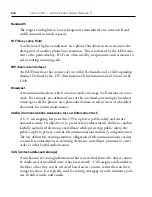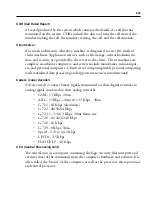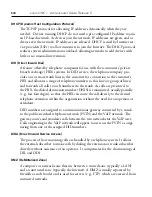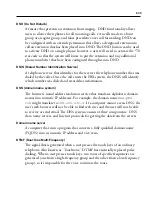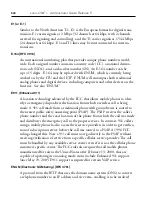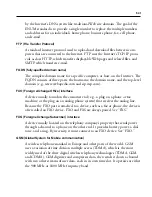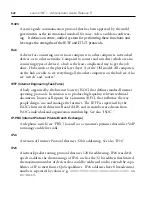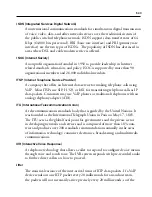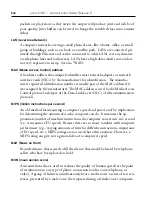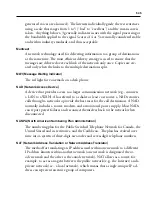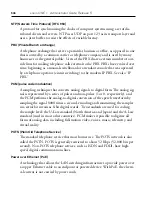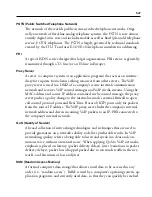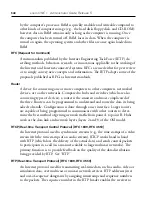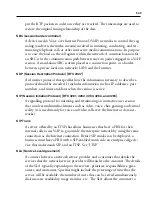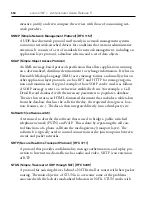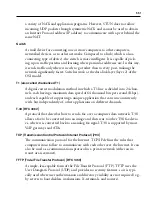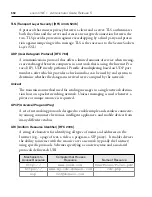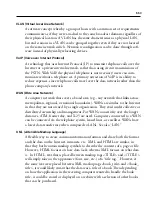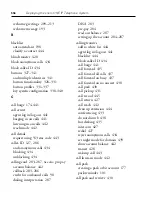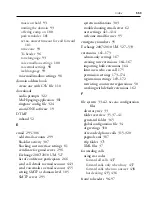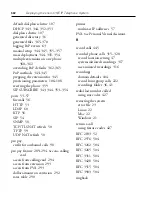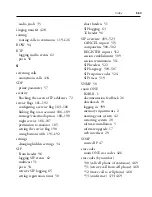
snom ONE
•
Administrator Guide, Release 5
550
measure, justify, and even compare the services with those of outsourcing net-
work providers.
SNMP (Simple Network Management Protocol) [RFC 1157]
A UDP-based network protocol used mostly in network management systems
to monitor network-attached devices for conditions that warrant administrative
attention. It consists of a set of standards for network management, including an
application layer protocol, a database schema, and a set of data objects.
SOAP (Simple Object Access Protocol)
An XML message-based protocol specification that allows applications running
on a decentralized, distributed environment to exchange information. It relies on
Extensible Markup Language (XML) as its message format, and usually relies on
other application layer protocols, such as RPT and HTTP for message negotia-
tion and transmission. A typical example of how SOAP can be used is as follows:
A SOAP message is sent to a web service enabled web site (for example, a Call
Detail Record database) with the necessary parameters to populate a database.
The site then returns an HTML-formatted document that includes a table taken
from the database that lists the calls for the day. the requested data (prices, loca-
tion, features, etc.). The data is then integrated directly into a third-party site.
Softswitch (software switch)
A term used to describe the software that is used to bridge a public switched
telephone network (PSTN) and VoIP. This is done by separating the call con-
trol functions of a phone call from the media gateway (transport layer). The
softswitch is typically used to control connections at the junction point between
circuit and packet networks.
SRTP (Secure Real-time Transport Protocol) [RFC 3711]
A protocol that provides confidentiality, message authentication, and replay pro-
tection to Internet media traffic such as audio and video. SRTP is an extension
of RTP.
STUN (Simple Traversal of UDP through NAT) [RFC 5389]
A protocol for assisting devices behind a NAT firewall or router with their packet
routing. The main objective of STUN is to overcome some of the problems
associated with the lack of standardized behaviors in NATs. STUN works with
Summary of Contents for ONE IP
Page 4: ......
Page 19: ...Part I Getting Started...
Page 20: ...Part I Getting Started...
Page 47: ...Part II Administering the System...
Page 48: ...Part II Administering the System...
Page 195: ...Deploying the snom ONE IP Telephone System 526...
Page 223: ......

